Top speed 435 km/h Wingspan 11 m Cruise speed 378 km/h First flight September 1, 1940 | Range 1,550 km Length 8.2 m Engine type Wright R-1820 Cyclone | |
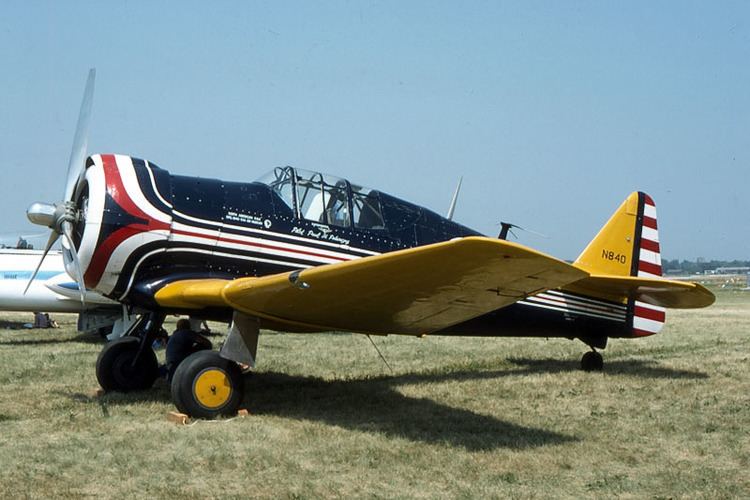 | ||
Eaa airventure 2016 1940 north american p 64 na 50 n840
The North American P-64 was the designation assigned by the United States Army Air Corps (USAAC) to the North American Aviation NA-68 fighter, an upgraded variant of the NA-50 developed during the late 1930s. Seven NA-50s were purchased by the Peruvian Air Force, which nicknamed it Torito ("Little Bull").
Contents
- Eaa airventure 2016 1940 north american p 64 na 50 n840
- North american p 64 flybys eaa airventure oshkosh 2016
- NA 50
- NA 68
- Operational history
- Operators
- Survivors
- Specifications NA 68P 64
- References
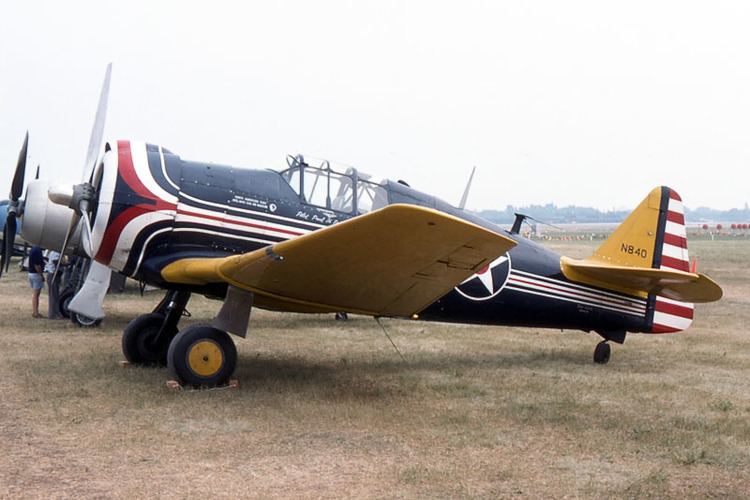
Six NA-68s ordered by the Royal Thai Air Force were seized before export by the US government in 1941, after the Franco-Thai War and growing ties between Thailand and the Empire of Japan. These aircraft were used by the USAAC as unarmed fighter trainers.
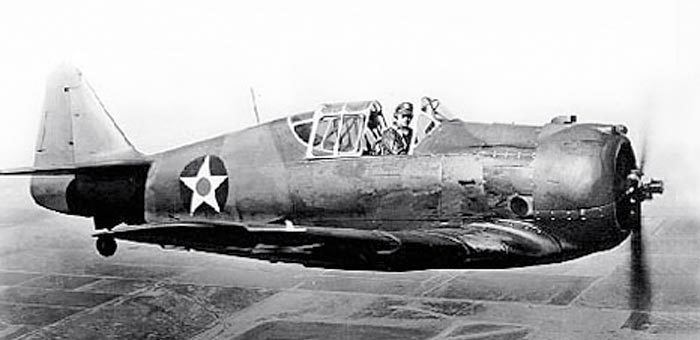
The Peruvian NA-50s subsequently saw action during the Ecuadorian-Peruvian War of 1941.
North american p 64 flybys eaa airventure oshkosh 2016
NA-50
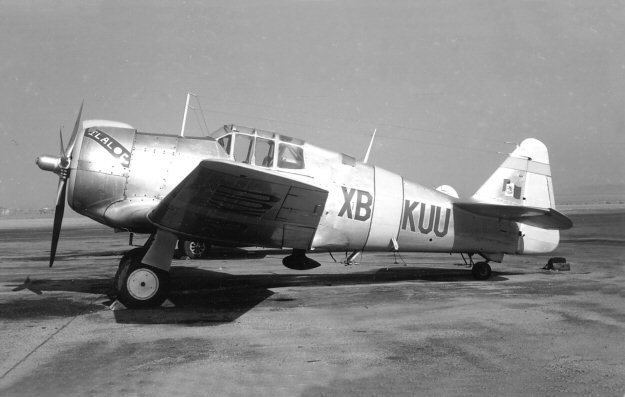
The North American Aviation NA-50 was developed as a simple single-seat, low-wing, single-engined fighter for export. The design was developed from the NA-16/BT-9 basic training aircraft of 1935. The NA-16 evolved into a series of aircraft that were some of the most widely used advanced and basic training aircraft produced by any country, and provided the basic design for a single-engined fighter intended for small countries that needed a simple aircraft with modern capabilities and features.
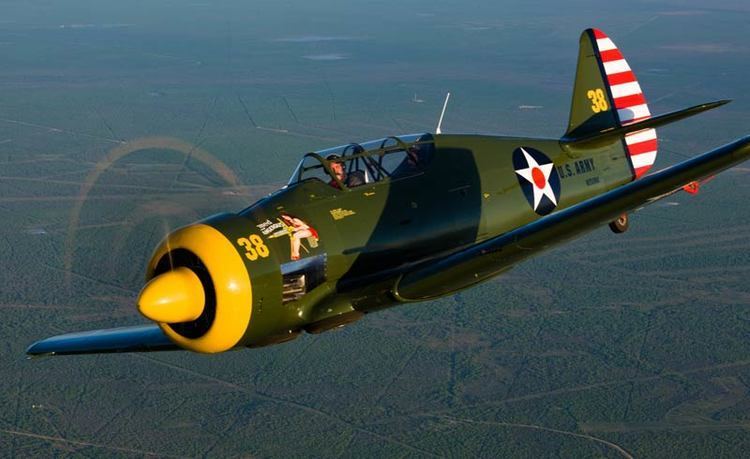
The NA-50 Torito (Spanish slang for "little bull"), built for Peru, was a single-seat fighter design based on the two-seat Basic Combat Demonstrator NA-44. The NA-50 was powered by an 840 hp (626 kW) Wright R-1820-G3 radial air-cooled engine that gave the NA-50 a top speed of 295 mph at 9,500 feet. It was armed with two .30 in (7.62 mm) M1919 Browning machine guns. The aircraft were manufactured in May 1939, and test-flown at the factory.
NA-68
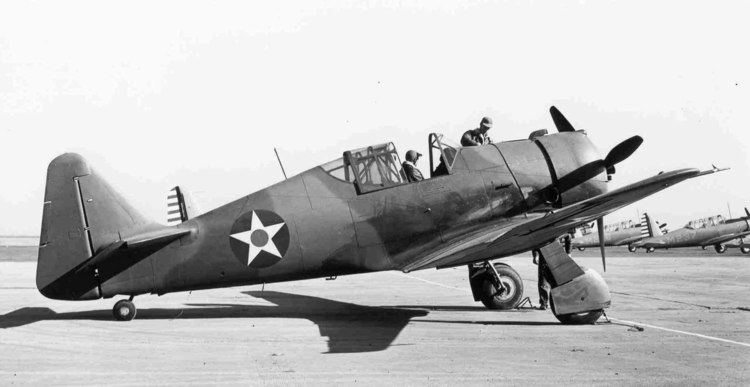
In 1940, the Royal Thai Air Force ordered six aircraft similar to the NA-50 that were designated NA-68. The changes in the NA-68 included a modified landing gear, new outer wings, heavier armament, and redesigned tail surfaces similar to those adopted on later production trainers. North American test pilot Lewis Waite flew the first NA-68 on 1 September 1940.
Operational history
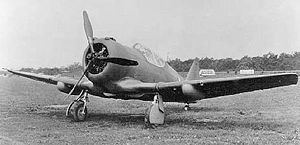
Peru purchased seven aircraft for the Peruvian Air Force, with deliveries completed in May 1939. In Peruvian service, these aircraft were fitted with bomb racks under the fuselage for light bombs. The Peruvian NA-50s took part in the Ecuadorian-Peruvian war of July 1941, supporting Army of Peru ground forces.
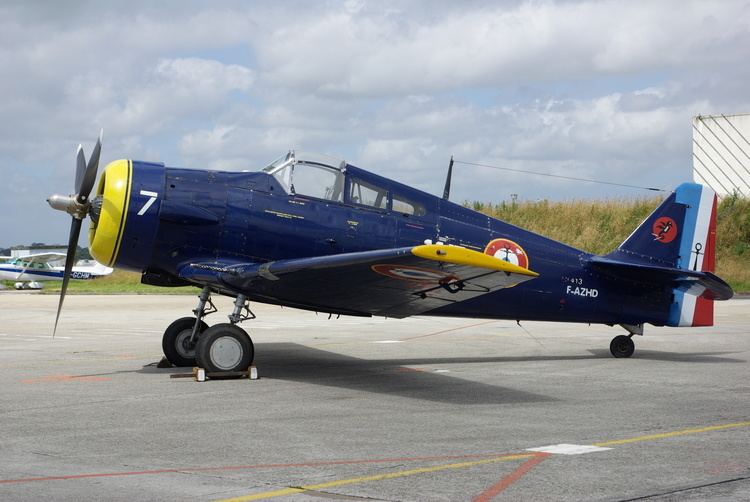
In 1940, the NA-68s (along with a parallel order for NA-69 two seaters) ordered by the Royal Thai Air Force were en route to Thailand when their export clearance was cancelled and were returned to the United States where they were assigned the designation P-64, disarmed, and used for advanced fighter training.
Operators
Survivors
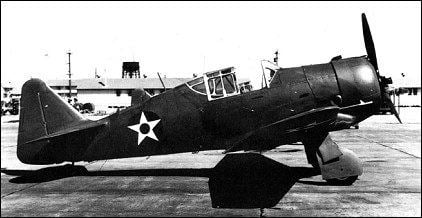
Specifications (NA-68/P-64)
Data from
General characteristics
Performance
Armament
